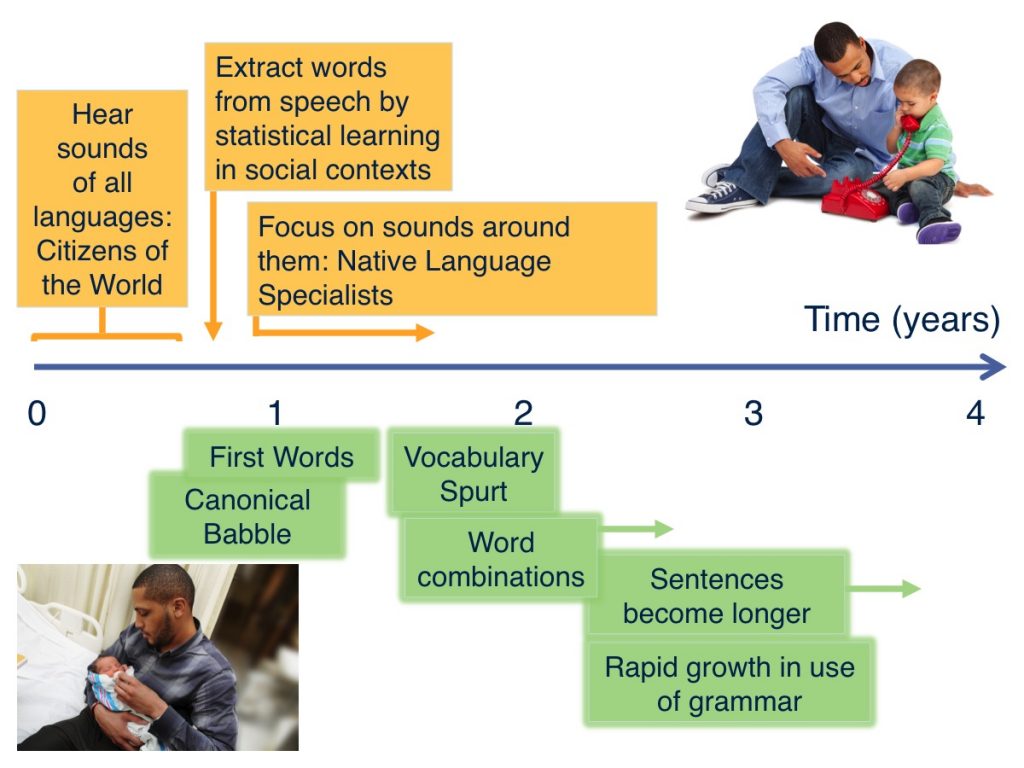
In this module, we discussed the different stages in speech production. Brain studies show a tight link between speech production and speech perception. We discussed this relationship in the module “Language Development: Learning the Sounds of Language.” In the first year of life, infants begin making individual vowel and consonant sounds. This results from hearing speech during frequent interactions with caregivers, peers, and other people. Then, children transition to producing syllables, words, and sentences themselves. By the time they enter school, children have a vocabulary of several thousand words. They speak in full sentences and are ready to learn how to read.
We used English examples to illustrate the patterns of language growth. Of course, different languages have different structures. Children have to figure out the rules of the specific language they are learning. Despite these differences between languages, children follow the same general pattern of language learning. They reach milestones in the same order. This is also true for the acquisition of sign languages. Take, for example, deaf babies who are born to deaf parents and experience sign language from birth. These deaf babies begin to babble with their hands between 6 and 9 months of age. This is the same age at which hearing babies begin to babble with their mouths.
Language learning begins before birth. Children who hear lots of language and experience many high quality interactions have more opportunities to speak and understand language. In contrast, children who hear less language typically make fewer sounds and babble less. They also learn fewer words and understand and produce fewer and shorter sentences. The gap between those children who participate in frequent higher quality interactions and those who do not only widens with age. High quality interactions between caregivers and children are essential to learning language throughout life.
-
- Back-and-forth or contingent interactions
- exchanges where a caregiver times her responses to a child’s behavior
- Canonical babbling
- producing the same consonant and vowel over and over, such as dadada
- Infant-directed speech
- a special tone and style of speech used to talk to young children. It’s also called parentese
- Joint attention
- shared attention between social partners to an object or event
- Overextension
- using a word to describe more object categories than it actually represents
- Underextension
- failing to extend a word to other objects in the same category
- Vocabulary spurt
- rapid growth in word learning